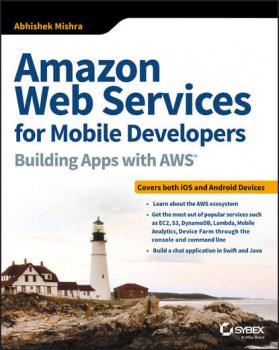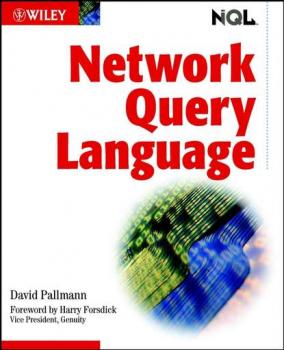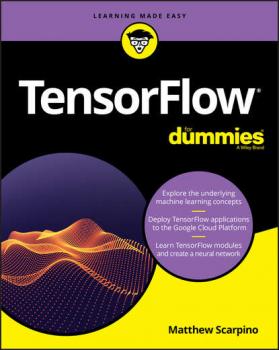Группа авторов
Список книг автора Группа авторовThe Web's Awake
The central thesis of The Web's Awake is that the phenomenal growth and complexity of the web is beginning to outstrip our capability to control it directly. Many have worked on the concept of emergent properties within highly complex systems, concentrating heavily on the underlying mechanics concerned. Few, however, have studied the fundamentals involved from a sociotechnical perspective. In short, the virtual anatomy of the Web remains relatively uninvestigated. The Web's Awake attempts to seriously explore this gap, citing a number of provocative, yet objective, similarities from studies relating to both real world and digital systems. It presents a collage of interlinked facts, assertions, and coincidences, which boldly point to a Web with powerful potential for life.
Virtual & Augmented Reality For Dummies
An easy-to-understand primer on Virtual Reality and Augmented Reality Virtual Reality (VR) and Augmented Reality (AR) are driving the next technological revolution. If you want to get in on the action, this book helps you understand what these technologies are, their history, how they’re being used, and how they’ll affect consumers both personally and professionally in the very near future. With VR and AR poised to become mainstream within the next few years, an accessible book to bring users up to speed on the subject is sorely needed—and that’s where this handy reference comes in! Rather than focusing on a specific piece of hardware (HTC Vive, Oculus Rift, iOS ARKit) or software (Unity, Unreal Engine), Virtual & Augmented Reality For Dummies offers a broad look at both VR and AR, giving you a bird’s eye view of what you can expect as they continue to take the world by storm. * Keeps you up-to-date on the pulse of this fast-changing technology * Explores the many ways AR/VR are being used in fields such as healthcare, education, and entertainment * Includes interviews with designers, developers, and technologists currently working in the fields of VR and AR Perfect for both potential content creators and content consumers, this book will change the way you approach and contribute to these emerging technologies.
CompTIA Network+ Practice Tests
A smarter, faster review for the CompTIA Network+ exam N10-007 Expertly authored questions provide comprehensive, concise review of 100% of all CompTIA Network+ exam objectives. This certification validates skills equivalent to nine months of practical networking experience; those earning the Network+ certificate will have the skills needed to install, configure, and troubleshoot today's basic networking hardware peripherals and protocols. CompTIA Network+ Practice Tests (Exam N10-007) offers 1200 practice questions with answers and explanations, organized into 5 full-length chapter tests, PLUS 2 practice exams, and a year of FREE access to the online test bank. Coverage includes: Network Architecture; Network Operations; Network Security; Troubleshooting; and Industry Standards, Practices, and Network Theory. It’s the ideal companion to the CompTIA Network+ Study Guide, CompTIA Network+ Review Guide, and CompTIA Network+ Deluxe Study Guide for Exam N10-007! • Covers advances in networking technology • Reflects changes in associated job tasks • Places emphasis on network implementation and support • Includes coverage of cloud and wireless networking topics This book helps you gain the confidence you need for taking the new CompTIA Network+ Exam N10-007. The practice test questions prepare you for test success.
Analog Automation and Digital Feedback Control Techniques
This book covers various modern theoretical, technical, practical and technological aspects of computerized numerical control and control systems of deterministic and stochastic dynamical processes.
Concurrent and Real-Time Programming in Java
This book provides an introduction to concurrent, real-time, distributed programming with Java object-oriented language support as an algorithm description tool. It describes in particular the mechanisms of synchronization (cooperative and competitive) and sharing of data (internal class, static variables) between threads in Java. He then discusses the use of Java for real-time applications. Consequently, a presentation of the RTSJ (Real Time Specification for Java) specification dedicated to the development of real-time applications in Java is also introduced in this book. Finally, a presentation of programming distributed in Java is presented in this book. We are particularly interested in communication using the TCP Sockets and high-level communication using Java Remote Method Invocation (RMI). The book also contains an annex which contains a practical set of application exercises in relation to the theme of the book. Knowledge of the Java language is a prerequisite for understanding the book.
Amazon Web Services for Mobile Developers
A practical, real-world introduction to AWS tools and concepts Amazon Web Services for Mobile Developers: Building Apps with AWS presents a professional view of cloud computing and AWS for experienced iOS/Android developers and technical/solution architects. Cloud computing is a rapidly expanding ecosystem, and working professionals need a practical resource to bring them up-to-date on tools that are rapidly becoming indispensable; this book helps expand your skill set by introducing you to AWS offerings that can make your job easier, with a focus on real-world application. Author and mobile applications developer Abhishek Mishra shows you how to create IAM accounts and try out some of the most popular services, including EC2, Lambda, Mobile Analytics, Device Farm, and more. You'll build a chat application in both Swift (iOS) and Java (Andoid), running completely off AWS Infrastructure to explore SDK installation, Xcode, Cognito authentication, DynamoDB, Amazon SNA Notifications, and other useful tools. By actually using the tools as you learn about them, you develop a more intuitive understanding that feels less like a shift and more like a streamlined integration. If you have prior experience with Swift or Java and a solid knowledge of web services, this book can help you quickly take your skills to the next level with a practical approach to learning that translates easily into real-world use. Understand the key concepts of AWS as applied to both iOS and Android developers Explore major AWS offerings for mobile developers, including DynamoDB, RDS, EC2, SNS, Cognito, and more Learn what people are talking about when they use buzzwords like PaaS, IaaS, SaaS, and APaaS Work through explanations by building apps that tie into the AWS ecosystem Any job is easier with the right tools, and Amazon Web Services for Mobile Developers: Building Apps with AWS gets you acquainted with an ever-expanding toolkit for mobile app development.
Network Query Language (NQL)
An unparalleled opportunity to learn about an exciting new technology that is revolutionizing network and Internet content delivery Network Query Language (NQL) is a revolutionary new scripting language that makes it astonishingly quick and easy to aggregate, analyze, interpret, and redistribute information via networks. Described as the «first language of the content engineering era,» NQL allows programmers to develop bots, intelligent agents, middleware, and sophisticated Web applications in a small fraction of the time it would ordinarily take. This book offers developers and network administrators an unparalleled opportunity to learn about this exciting new technology-what it is, how it works, and how to use and make the most of its many features-from the man who invented it. CD-ROM contains a 60-day-timeout version of NQL in both Windows and Java (Linux and Macintosh) formats.
TensorFlow For Dummies
Become a machine learning pro! Google TensorFlow has become the darling of financial firms and research organizations, but the technology can be intimidating and the learning curve is steep. Luckily, TensorFlow For Dummies is here to offer you a friendly, easy-to-follow book on the subject. Inside, you’ll find out how to write applications with TensorFlow, while also grasping the concepts underlying machine learning—all without ever losing your cool! Machine learning has become ubiquitous in modern society, and its applications include language translation, robotics, handwriting analysis, financial prediction, and image recognition. TensorFlow is Google's preeminent toolset for machine learning, and this hands-on guide makes it easy to understand, even for those without a background in artificial intelligence. Install TensorFlow on your computer Learn the fundamentals of statistical regression and neural networks Visualize the machine learning process with TensorBoard Perform image recognition with convolutional neural networks (CNNs) Analyze sequential data with recurrent neural networks (RNNs) Execute TensorFlow on mobile devices and the Google Cloud Platform (GCP) If you’re a manager or software developer looking to use TensorFlow for machine learning, this is the book you’ll want to have close by.
Profit From Your Forecasting Software
Go beyond technique to master the difficult judgement calls of forecasting A variety of software can be used effectively to achieve accurate forecasting, but no software can replace the essential human component. You may be new to forecasting, or you may have mastered the statistical theory behind the software’s predictions, and even more advanced “power user” techniques for the software itself—but your forecasts will never reach peak accuracy unless you master the complex judgement calls that the software cannot make. Profit From Your Forecasting Software addresses the issues that arise regularly, and shows you how to make the correct decisions to get the most out of your software. Taking a non-mathematical approach to the various forecasting models, the discussion covers common everyday decisions such as model choice, forecast adjustment, product hierarchies, safety stock levels, model fit, testing, and much more. Clear explanations help you better understand seasonal indices, smoothing coefficients, mean absolute percentage error, and r-squared, and an exploration of psychological biases provides insight into the decision to override the software’s forecast. With a focus on choice, interpretation, and judgement, this book goes beyond the technical manuals to help you truly grasp the more intangible skills that lead to better accuracy. Explore the advantages and disadvantages of alternative forecasting methods in different situations Master the interpretation and evaluation of your software’s output Learn the subconscious biases that could affect your judgement toward intervention Find expert guidance on testing, planning, and configuration to help you get the most out of your software Relevant to sales forecasters, demand planners, and analysts across industries, Profit From Your Forecasting Software is the much sought-after “missing piece” in forecasting reference.
The Symbian OS Architecture Sourcebook
The current Symbian Press list focuses very much on the small scale features of Symbian OS in a programming context. The Architecture Sourcebook is different. It's not a how-to book, it's a 'what and why' book. And because it names names as it unwinds the design decisions which have shaped the OS, it is also a 'who' book. It will show where the OS came from, how it has evolved to be what it is, and provide a simple model for understanding what it is, how it is put together, and how to interface to it and work with it. It will also show why design decision were made, and will bring those decisions to life in the words of Symbian's key architects and developers, giving an insider feel to the book as it weaves the «inside story» around the architectural presentation. The book will describe the OS architecture in terms of the Symbian system model. It will show how the model breaks down the system into parts, what role the parts play in the system, how the parts are architected, what motivates their design, and how the design has evolved through the different releases of the system. Key system concepts will be described; design patterns will be explored and related to those from other operating systems. The unique features of Symbian OS will be highlighted and their motivation and evolution traced and described. The book will include a substantial reference section itemising the OS and its toolkit at component level and providing a reference entry for each component.









